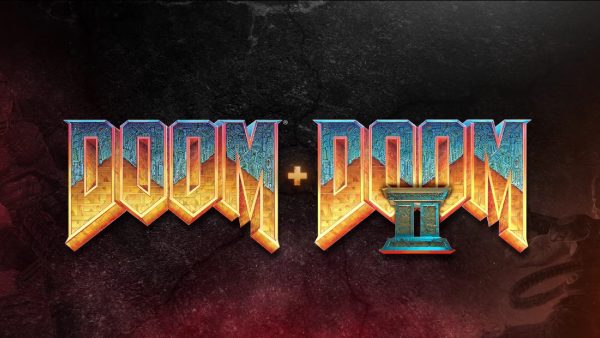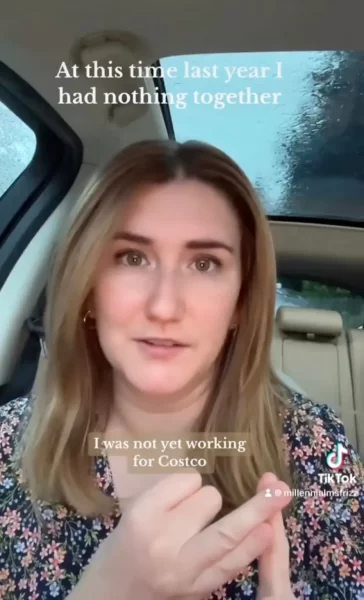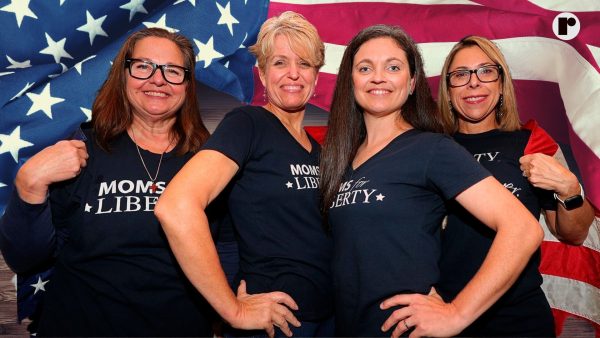The sins of the music industry are many

https://www.google.com/url?sa=i&rct=j&q=&esrc=s&source=images&cd=&cad=rja&uact=8&ved=0ahUKEwiV18aFuK3RAhVD4CYKHXQgDd4QjB0IBg&url=http%3A%2F%2Fwww.independentmusicpromotions.com%2Fwhy-you-always-need-to-pay-people-in-the-music-industry%2F&psig=AFQjCNGAJqNNztvhtSrVVfwSQjSKShmlwA&ust=1483789301128507
Imagine taking raw clay into your hands and trying to shape it into a beautiful vase over the course of a long and fatiguing year. As the year ends and your vase is coming together nicely, a man in a suit approaches you and tells you he that likes your vase. “I want to make you and your creation known around the world”, he says. “I want to help you make your vase seen by all and, more importantly, I want to help you make money!” Before you can speak he grab your shoulder and slides a pen into your hand. “You want money, don’t you?”, he says. While you had only been making this vase because you enjoy creating things, the prospect of having your vase shown about doesn’t sound all that bad. You agree to the proposal but before you really have a chance to read into it the man snatches it away and tucks it into his coat pocket.
For a lot of singers and producers these days this is exactly what it is like: they get lured in with the prospect of making money and get sucked into a constrictive, robbery-like deal instead.
This is exactly what happened to me.
As a younger, more naïve artist I had been signed to a record label with a 360 plan under the stage name Adagio. When my first album came out I was still an emerging name and hadn’t garnered a very large following but I was still tasked with selling 300 copies of my album and while 300 copies doesn’t sound like a very large number to most, when you have little-to-no audience, it’s an impossible goal. And just to make things better, the Internet’s existence makes it infinitely easier to just take things for free off of semi-legal sites like Napster or MegaUpload because people are more willing to spend 5 dollars on a cup of coffee than spend 5 dollars on an album that took someone two years worth of sleepless nights to create.
But I digress.
Having not reached my sales target I was now stuck in a shady contract with a pitiless record label and was unable to publish music without it being claimed. Eventually, in a fit of frustration, I was forced to change my name and reset to start. No music in my discography, no followers in my feed, and no reputation behind my name.
And as terrible as it is, it’s not uncommon.
A similar story can be told by music producer and online personality Francisco Jav Contreras, otherwise known as FrankJavCee.
In 2011 Contreras started a band with his friend Marion Amira (otherwise known as marionismagical) called Kids Without Instruments. Contreras and Amira later signed to a undisclosed record label with a luring starting bonus of $500 and released their first record, Kids Without Instruments EP. In 2013 however they failed to reach the 15,000 dollar goal that had been set for them. Because of this they were “indebted” to the label and as a result, unable to publish under the name Kids Without Instruments without the rights going to the recording label even if they were not involved in the production.
It seems to be a common misconception these days that artists are rich, artificial narcissists who live freely while releasing a quick song a year and soaking in the revenue that it generates, but this could not be farther from the truth. For a lot of musicians and music producers the time spent between projects are generally lived relatively lightly, especially for career artists will live off of their sales.
Even skipping past the years-upon-years it takes to generate enough exposure to get the attention of a record label, the actual process of getting signed to a label is still a long and stressful process that leaves a lot of people financially vulnerable, record label employees included.
Record labels, often owned by a larger record company, are generally separated into 11 major divisions: A&R (Artist and Repertoire), the Art Department, Artist Development, Business Affairs, the Label Liaison, the Legal Department, Marketing, New Media, the Promotion Department, Publicity, and Sales.
Artist and Repertoire is the department in charge of discovering and signing new artists. This department is also in charge of deciding what tracks make an album’s final cut and who produces an album. They also serve as an artist’s liaison to the rest of the label’s departments.
The Art Department is rather self-explanatory. This sector creates the album art, commercial displays, and advertisements.
Business Affairs is the section that takes care of the financial aspect of the label.
The Label Liaison, often just one person, is in charge of talking to other divisions with the corporate network. They talk to record distributors and stores and are also in charge of making sure an album’s release does not contest any other release from a record label under the label’s parent company.
The Legal Department is another rather self-explanatory department. This branch handles lawsuits and other legal disputes.
Marketing is the division of a record label that is in charge of planning promotion, publicity, and sales. The Promotion, Publicity, and Sales Departments are the departments that carry out the plans set by Marketing. Their responsibilities include making sure a signed artist is on television and radio, getting word about a signed artist out, and overseeing retail respectively.
New Media is the department responsible for managing the newer side of music and media and how it reaches the masses. They create music videos, establish presence on the internet, and handle streaming services.
Finally Artist Development is in charge of grooming and conditioning an artist for commercial success. While formally known as Artist Development many record labels have phased this branch out in favor of “Product Development,” a title that warmly embraces a much colder and more mechanical approach to handling artist and their work. The Artist, or Product, Development branch is dedicated to assisting artists with capitalizing on their more profitable skills and techniques as well as helping artists plan the length of their careers, whether it be long or short.
But before a person can even have a “career” as an artist they first have to be signed to a record label.
Generally after completing an album or other project the next step would be to have it published and unless an artist has a complete team of publishers, distributors, and publicists on ready, you’d need the help of a record label. Unfortunately, if you want them to assist you they’ll want you to stay with them. So in order to keep recording artists from leaving in favor of competitors or skipping out on paying the record label, the recording contract was created.
A recording contract, also known as a record deal or record contract, is a legal arrangement in which a record artist or group produces a record (or records) for a recording label to promote and sell. Under contract, artists are required to remain exclusive to the label they are signed to. In addition to this, the recording artist’s finished record carries the branding of the label, the label gets the rights to the record, the label also receives a portion of the record’s sales. Although the terms of a contract often vary a plan know as a “360 deal” is a very commonly used contract.
The 360 deal is a relatively new type of contract that is becoming the norm for recording artists, particularly those looking for a way into the industry.
Due to the evolution of the music industry and how records reach consumers, record labels too have evolved their business strategies in an effort to find better streams of revenue. The 360 deal, otherwise known as a “multiple rights deal”, is a contract that allows record labels to profit off of every aspect of an artist’s earnings opposed to just record sales. This is the equivalent of selling all your artistic rights. These plans allow labels to collect profit off of merchandise sales, sponsorship and endorsement deals, concert revenue, and even fund-raised money. Anything that produces revenue and has the artist’s name on it is also, by contract, property of the recording label the artist is signed to.
In addition to this many record labels will expect that their pay come directly out of gross revenues, meaning that all of the money they make comes completely deduction-free.
And if that wasn’t bad enough most artists don’t make much money off of the direct record sales as is.
While almost all recording contracts come with an up-front signing bonus of something between $100 and $10,000, artists in 360 deals, on average, end up surrendering between 5% and 50% of the money made off of record sales according to other sources. Between distribution fees, manager charges, promotion costs, and mastering prices, record labels almost work like banks. The signing bonus would be the equivalent of an investment in the artist and the hundred thousand dollar promotion, distribution, and mastering charges would be like a loan and much like a loan the label expects to make all of their money back, in record sales. As a matter of fact, until a record’s sales hit a certain point (usually negotiated between the label and the artist) the artist makes absolutely no money. If a record does not reach it’s goal the artist will be stuck in that contract until they pay off their debt meaning if they tried to post or publish anything under that name, all proceeds would go directly to the record label.
This, of course, is assuming people even purchase the record.
With the accessibility and large scope of the Internet these days it is much easier to download or stream an album than it is to pay for it and thanks to the large communities of virulent Internet pirates, “file sharing” sites like ZippyShare and MediaFire can have an entire album within hours of its release. These sites allow would-be consumers to get their musical fix for free and with absolutely no consequence.
Because theft is considered when Person A takes Person B’s item leaving Person B with nothing, file sharing is considered legal. With theft, Person A gains and Person B loses but with sharing a file, Person A gains and Person B neither gains nor loses. This is why it is so easy to get away with pirating music. While Person B can argue that by illegally downloading their intellectual property Person A is stealing the profit that would have been made if it had been purchased legally, this argument is usually contested by two major points: one, it’s nearly impossible to determine whether or not Person A would have purchased the work had they not downloaded it illegally. And two, this argument assumes that illegally downloading the works of Person B is theft, and many people don’t think pirating music is.
While illegally downloading files, or “file sharing”, is very real problem and — in the opinion of this author — theft, it is hard to punish via law when it is at odds with the morals of a vast majority of people. In fact, a 2012 study conducted by Creative Content Australia (CCA) showed that only 49% of “persistent illegal downloaders” agreed with the statement that “movie/TV piracy” is “stealing/theft.” But when asked whether they contribute to “the problem of TV/movie piracy,” 74% chose “It’s not something I give a lot of thought to.” And in another piracy study conducted by Columbia University, on average, 80% of participants agreed that it was reasonable to share unauthorized music files (illegally downloaded music) with family members, 60% agreed it was reasonable to share with friends, 15% agreed it was reasonable to upload unauthorized music files to a website where other people could download them, 10% agreed that it was reasonable to post links to unauthorized files on social media, and 4% agreed that it was reasonable to sell copies of unauthorized files.
What this means is that even if there was a law in place to combat piracy it would most likely be overlooked because many people don’t see illegally downloading music as immoral.
So now, strapped for cash and with very few sales, artists are forced to rely on royalty payment.
First and foremost, there are two types of musicians (legally): songwriters and performing artists. The songwriter is the person who wrote the lyrics and holds the rights to the melody and lyrics. The recording artist is the person (or people) who recorded the song and hold the rights to the master recording of a song.
Royalties are the money artists and songwriters receive whenever their song is performed publicly (e.g. played in a restaurant, played over a radio, or played over a service like Spotify or Pandora). These are called performance royalties. Artists are also played royalties whenever their work is licensed (on CD or Vinyl) or streamed “on-demand”. These are called mechanical royalties.
While this sounds like a great deal, it’s little more than pocket change in reality.
Spotify, for example, pays about 60% of its revenue to artists and 10% to songwriters. Because Spotify is a newer, hybrid service, this pay is split between both mechanical and performance royalties. This pay, however, is between $0.006 and $0.0084 per stream for the artist and between $0.0006 and $0.00084 for the songwriter according to the Verge. To put it in perspective this means that for every dollar made the artist gets about 59¢ and the songwriter gets about 9¢, and that’s assuming the artist’s track can garner the 82 streams needed to make that 59¢.
Even with the many social platforms available these days many great artists, singers, and musicians go unheard. Gaining exposure is a hard task and can take years and years even if an artist has a good sound and it’s even harder for artists who are pioneering new styles to be successful in the industry. Putting aside the fact that getting discovered is often a “right place at the right time” type of deal, the decision of whether or not a record will be published is made by a recording label, often not based on whether or not they like the sound, but instead based on how it will sell and how much it profits the label.
Record labels and record companies are a corporate aspect in an artistic industry and as such their views are business views. To them, artists are products and by signing them they are making an investment.
Regardless of how well artists like Rihanna or Beyoncé perform artistically if they didn’t perform commercially, they probably wouldn’t be seen as often as they are because as tasteless as it is, record companies interaction in the artistic world is more than just sidelining.
Record companies have had a recorded influence on change of music industry trends since the mid 1960s when funk first hit the streets. Funk music was vastly popular until the rise of early hip hop in the 1980s, in which record labels found it easier for them to pay one rapper in lieu of an entire funk band. The potential profit that came with R&B and hip hop was taken into account over the empowering value that came with funk records that were mainly produced by African-American, LGBT+, and female artists and played a large role in the unification of African-American communities during the peak of the Civil Rights Movement. Funk music was even further wiped out when disc jockeys began to refuse to play and boycott funk records. This anti-funk disposition hit a climax on July 12 of 1979 in an event that became known as “Disco Demolition Night” in which radio personality Steven Dahl and over 5,000 other anti-disco protesters burned and exploded funk and disco records in Comiskey Park during a doubleheader baseball game, causing a miniature riot in the process.
Fortunately for artists there are alternatives to the intimidating record labels that stalk the music industry. One such alternative being self-distribution/aggregation.
Because digital music now accounts for 62% of recorded music in music market (in Australia), services like Spotify, Pandora, and Apple Music have become increasingly more popular and for independent recording artists (artists not signed to a label) to share their music to services like these they need a digital music aggregator.
Aggregators help artists by acting as an intermediary between the artist and digital stores and streaming platforms. This of course is for a fee.
Many aggregators charge up-front and/or collect a percentage of the revenue made from sales and streams but others will charge an annual subscription fee. Regardless, most aggregators charge for each song or album sold.
CDBaby, for example, charges around $89. to distribute an album globally (physically and digitally), register and monetize the album, and monitor and collect royalties (while taking a 9%) and charges $34.95 to do the same with a single song.
Compared to the restrictive contracts mentioned before this seems like a clear plus but since aggregators only act as distributors they don’t manage promotion and exposure. For an emerging artist with an aggregator distribution may not be as big of a problem as marketing and gaining a following. At least with a record label the artist doesn’t have to pay anything out of pocket and has a team to help them with the financial details.
In the end, many of the works from underground artists like Nitro Pulse or Moonchill never pass through the threshold of widespread acclaim because their backs are broken by the weight of a late-staged capitalistic economy that doesn’t care about the wellbeing of its artists. And while it’s unfortunate that music, an art form that is meant to be available to everyone, has been turned into a competitive “industry” by a foreign corporate agent, it’s not something that could be changed by words alone.
So if there is only one thing you can take away from this article it’s:
Please support your artists.

I am a Senior in Journalism I who enjoys Journalism and hopes to pursue a career in it.








iliyana • May 16, 2019 at 3:57 am
Amazing blog post I really enjoying while reading your article and I will definitely share your post with my friends and other social sites. I really want to say thank you so much for publishing. Liquidweb Coupons